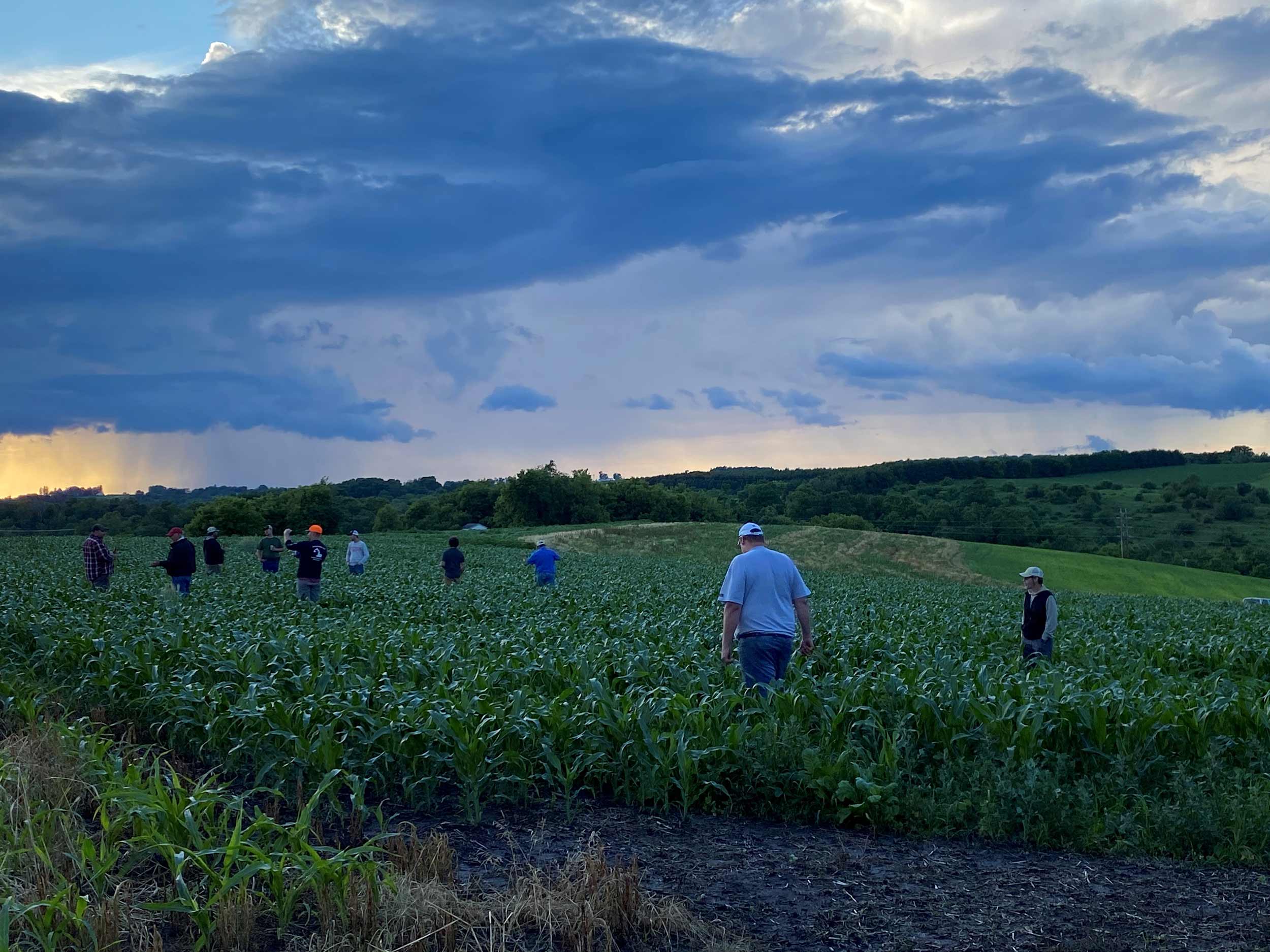Funded Project
2018 | Rice Creek – Cannon River Watershed

Contact
Funders: Fishers & Farmers Partnership & DARE
Applicant Organization: Clean River Partners
Contact: Al Kraus
Email: alan@cleanriverpartners.org
Project
Farmers are working with Clean River Partners to plant cover crops on about 1,000 of 3,469 tillable acres in Rice Creek watershed for three consecutive years. The work focuses on creating long-term watershed-wide protection by reducing nitrate, phosphorus and solids loading into Rice Creek and downstream into the Cannon River. St. Olaf College is monitoring drainage tile and in-stream nitrate, total phosphorus, total suspended solids and aquatic macroinvertebrates.
Rice Creek, locally known as Spring Brook, is a beautiful trout stream flowing through acres of farmland in Rice County, Minnesota. Over time, the creek has faced challenges such as soil erosion and flooding, impacting its ecosystem and trout population. Recognizing the need for intervention, Clean River Partners, led by Al Kraus, initiated a community-driven effort to protect and revitalize Rice Creek. Tim Little, who has farmed land adjacent to Rice Creek for over 45 years, was watched as increasingly severe weather events washed the soil from his land into the creek. After attending workshops put on by the Rice Soil and Water Conservation District, Tim realized that he couldn’t keep farming with compromised soil and decided to make a change. Tim credits the workshops with giving him the motivation to try something new, “I learned enough to start knowing what to look for, and when you start doing that, seeing it with your own eyes, it kind of snowballed from there.”
After discussing with neighbors, Tim helped organize a group of seven local farmers who meet regularly to discuss cover crops and share information. The farmer-led group works together to make decisions and gather support for sustainable agriculture initiatives in the Rice Creek Watershed and has been a driving force behind current projects. In the Boots on the Ground online conversation series, Al Kraus credits the group with taking leadership in the watershed, “They’ve done that on their own. That’s 100% their deal, and it’s really exciting. Of the models that we’re talking about, that’s a model that should be repeated over and over again.”
Along with eroding soil, farmers were concerned with water quality. Rice Creek is the only designated trout stream in Rice County fed entirely by groundwater, which sustains the cold temperatures needed to support naturally reproducing trout populations. Since trout are sensitive to temperature and stream degradation, soil erosion from farms and flooding caused nitrate overloading, and Rice Creek needed intervention to preserve the dwindling trout population.
Al Kraus knew that the stream could only be revitalized by bringing the community together to make change. In 2018, with funding from Fishers and Farmers Partnership, Clean River Partners brought together a dozen local farmers, the Minnesota Department of Natural Resources, Rice Soil and Water Conservation District, and local volunteers who cared about Rice Creek’s future. The group held workshops about the impact of cover crops on nitrate loading and stream water quality with the aim to decrease nitrate and sediment loading in Rice Creek, Heath Creek, and Wolf Creek. Kraus says, “Our long-term goal is to get that impairment removed from Rice Creek. It’s trending in the right direction.” Additionally, Clean River Partners aims to increase cover crop practice implementation around Rice Creek and promote awareness of the watershed benefits from cover crops among non-farm communities.
Outreach for the project included two soil health field days, attended by 102 people in the project area, as well as presentations about the project at multiple local and regional farm management meetings. Local radio and newspapers also featured the conservation story to spread the word.
The community responded and rallied to support CRP’s efforts. Participating farmers planted cover crops on 1,000 acres of land in the Rice Creek watershed. Cover crops, like ryegrass, winter rye, radish, kale, and clover keep nutrients in the soil and out of the water. The DNR conducted fish surveys and volunteers from St. Olaf College tested water samples along the stream. The results were eye opening.
From 2018-2022, the Rice Creek Project has achieved a 61% reduction in stream nitrate concentration in Rice Creek. When asked about the project’s efforts, Al Kraus praises the farmers who embraced the initiative, “Honestly, this really comes back to those guys and the farming families out there. They’re doing such a fantastic job showing us, really, what they can accomplish.”
Tim Little has reported greater soybean yields and is noticing changes in the quality of his soil. He is also spreading the word about cover crops and hopes the next generation of farmers will implement these practices. When asked about his long-term goal, working with Fishers and Farmers Partnership, his answer is simple, “Keep the soil on the farm.” The achievements of initiatives like the Rice Creek Project, spearheaded by Clean River Partners, underscore the effectiveness of community-driven efforts led by farmers in promoting clean farms and safeguarding water resources.

